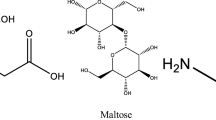Summary
Effects of asparagus root exudates on the growth and nutrient uptake of the seedlings of the same species in vermiculite culture were investigated. The phytotoxicity of collected root exudates of asparagus was tested by asparagus seed bioassay. Root exudates were washed from the donor pot to the acceptor pot. The height and number of stalks of asparagus seedlings of three varieties. Mary Washington, California 309 and 711 receiving root exudates were significantly reduced. No significant difference was observed in the growth of seedlings among these three varieties. N, P and K contents in the tops of asparagus seedlings were unaffected by root exudate treatments. The growth of asparagus radicle and shoot was inhibited by the root exudates collected from a resin trapping system. Bioassay results obtained with root exudates where the inhibition of shoot growth by root exudate was greater than that of root growth corresponded to the result in vermiculite culture. These data suggested that asparagus is an autoinhibited species which root exudates inhibit its own growth. Autointoxication as a possible mechanism for the yield decline and missing of plants in the replanting of asparagus in the tropics is discussed.
Similar content being viewed by others
References
Ayers W A and Thornton R H 1968 Exudation of amino acids by intact and damaged roots of wheat and peas. Plant and Soil 28, 193–207.
Chen Y W 1978 Study on improvement of asparagus decline and production problem. Proc. 2nd Symp. Asparagus Res. Taiwan, National Chung Hsing Univ., 17–25 p.
Chen Y M and Jean R T 1976 An experiment on the methods of maintaining and renewing the mother stalks in green asparagus. Proc. 1st Symp. Asparagus Res. Taiwan, National Chung Univ. 200–203 p.
Chou C H and Lin H J 1976 Autointoxication mechanism of oryza sativa, I. Phytotoxic effects of decomposing rice residues in soil. J. Chem. Ecol. 2, 353–367.
Hais I M and Macek K 1963 Paper Chromatography. Publishing House of the Czechslovak Academy of Sciences, Prague, 955 p.
Hale M G, Foy C L and Shay F J 1971 Factors affecting root exudation. Advance in Agronomy 23, 89–109.
Horwitz W ed. 1975 Methods of Analysis of Association of Official Analytical Chemists, 44–45 p.
Hung L 1974 The asparagus decline and replant problem in Taiwan. J. Chinese Soc. Hort. Sci. 20, 63–70.
Hung L 1978 Asparagus breeding. Proc. 2nd Symp. Asparagus Res. Taiwan, National Chung Hsing Univ., 133–154 p.
Lin C H and Liou T D 1978 Investigation on the factors affecting the missing plants in asparagus fields. Proc. 2nd Symp. Asparagus Res. Taiwan, National Chung Hsing Univ. 43–52 p.
Martin J K 1977 Factors influencing the loss of organic carbon from wheat roots. Soil Biol. Biochem. 9, 1–7.
Miller R H and Schmidt E L 1965 A technique for maintaining a sterile soil: plant root environment, and its application to the study of amino acids in the rhizosphere. Soil Sci. 100, 267–273.
Muller C H 1966 The role of chemical inhibition (allelopathy) in vegetational composition. Bull. Torrey Bot. Club. 93, 332–351.
Newman E I and Rovira A D 1975 Allelopathy among some British grassland species. J. Ecol. 63, 727–737.
Prikryl A and Vancura V 1980 Root exudates of plants VI. Wheat root exudation as dependent on growth, concentration gradient of exudates and the presence of bacteria. Plant and Soil 57, 69–83.
Rice E L 1968 Inhibition of nodulation of inoculated legumes by pioneer plant species from abandoned field. Bull. Torrey Bot. Club. 95, 346–358.
Rice E L 1974 Allelopathy. Academic Press, New York.
Rice E L 1979 Allelopathy — an update. Bot. Rev. 45, 15–109.
Rovira A D 1956 Plant root excretions in relation to the rhizosphere effect. I. The nature of root exudate from oats and peas. Plant and Soil 7, 178–194.
Rovira A D 1959 Root excretions in relation to the rhizosphere effect. IV. Influence of plant species, age of plant, light, temperature, and calcium nutrition on exudation. Plant and Soil 11, 53–64.
Rovira A D 1969 Plant root exudates. Bot. Rev. 35, 35–57.
Sajise P E and Lales J S 1975 Allelopathy in a mixture of cogon (Imperata cylindrica) andStylosanthes guyanensis. Philipp. J. Biol. 4, 155–164.
Schroth M N and Snyder W C 1961 Effect of host exudates on chlamydospore germination of the bean root rot fungusFusarium solani F.phaseoli. Phytopathology 51, 389–393.
Tang C S and Young C C 1982 Collection and identification of allelopathic compounds from the undisturbed root system of bigalta limpograss (Hemarthria altissima). Plant Physiol 69, 155–160.
Thompson H S and Keley W C 1971 Vegetable Crops. McGraw Hill Pub., New York, 187 p.
Vancura V 1967 Root exudates of plant III. Effect of temperature and ‘cold-shock’ on the exudation of various compounds from seeds and seedlings of maize and cucumber. Plant and Soil 27, 319–328.
Wang C S 1974 Experiment on the determination of economical productive period for asparagus. Ann. Rep.Asparagus officinalis L. Exp. 1971 and 1972, Taipei D.A.I.S., 14–15 p.
Yang H J 1982 Autotoxicity ofAsparagus officinalis L. J. Am. Soc. Hort. Sci. 107, 860–862.
Young C C and Bartholomew D P 1981 Allelopathy in a grass-legume association: I. Effect ofHemarthria altissima (Poir.) Stapf. and Hubb. root residues on theDesmodium intortum (Mill.) Urb. andHemarthria altissima in a tropical soil. Crop Sci. 221, 770–774.
Young C C 1984 Non-polar macroreticular resin to recovery phenolic acids from a subtropical latosol. Soil Biol. Biochem. (In press).
Young C C 1984 Resin extraction of chlorophenoxy herbicides from soils. Proc. Natl. Sci. Counc., R.O.C. (In press)
Author information
Authors and Affiliations
Rights and permissions
About this article
Cite this article
Young, C.C. Autointoxication in root exudates ofAsparagus officinalis L.. Plant Soil 82, 247–253 (1984). https://doi.org/10.1007/BF02220251
Received:
Revised:
Issue Date:
DOI: https://doi.org/10.1007/BF02220251




